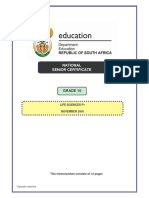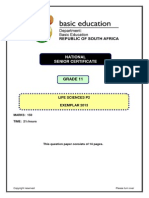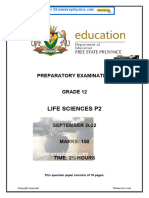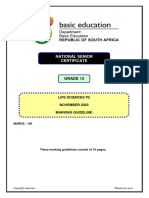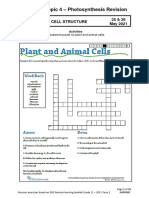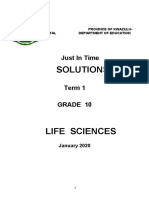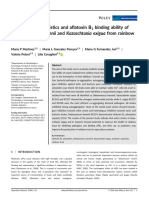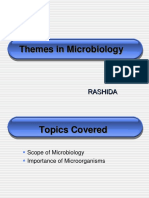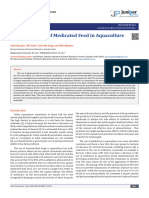Evolution
Topic test
Total: 40 Time: 40 minutes
Question 1
Various options are provided as possible answers to the following questions. Choose the
answer and write only the letter (A to D) next to the question number.
1.1 Which ONE of the following refers to a gradual change in the structure of organisms
over time?
A Natural selection
B Mutation
C Evolution
D Speciation
1.2 Study the mechanisms below:
(i) Species-specific courtship behaviour
(ii) Infertile offspring
(iii) Adaptation to different pollinators
(iv) Breeding at the same time of the year
Which ONE of the following combinations represents reproductive isolating
mechanisms?
A (i), (ii) and (iv) only
B (ii), (iii) and (iv) only
C (i), (ii) and (iii) only
D (i), (ii), (iii) and (iv)
1.3 The theory of evolution has been supported by a comparative study of the structure of
vertebrate forelimbs from the fossil record.
Which ONE of the following represents the statement above?
A Genetic evidence
B Modification by descent
C Natural selection
D Biogeography
�1.4 The
A table
1 : 20below compares the rate of extinction of mammal species over two different
time periods.
B 1:2
C 2:1
D 20 : 1
1.5 Which ONE of the following characteristics applies to bipedal organisms?
A A more backwards position of the foramen magnum
B A short, narrow pelvis
C A long, wide pelvis
D An S-shaped spine (5x2) =
(10)
Question 2
Provide the correct biological term for each of the following descriptions. Write only the term
next to the question number (2.1 – 2.4)
Questio Description
n
number
2.1 A diagram representing possible evolutionary relationships between species
2.2 An explanation describing evolution as consisting of long phases of little change
alternating with short phases of rapid change
2.3 The permanent disappearance of a species from Earth
2.4 Genus to which Little Foot and Mrs Ples belongs
(4)
Question 3
The E. coli bacterium lives in the intestines of pigs where they reproduce rapidly. Certain
strains of E. coli cause diarrhoea in young pigs (piglets).
Scientists carried out an investigation using 100 piglets to determine the resistance of E. coli to
�two antibiotics, A and B.
The scientists:
Injected the piglets with antibiotic A and antibiotic B
Took a sample of E. coli from the intestines of each piglet a week later and placed them
in separate petri dishes
Allowed the bacteria to grow for 24 hours
Added antibiotic A to one petri dish and antibiotic B to the other petri dish
Measured the growth of the bacteria in each petri dish after 24 hours
Used the growth measurement as an indication of the resistance of the bacteria to each
antibiotic
Repeated the process over a period of six months
Calculated the average percentage resistance to both antibiotics
The results are shown in the graph below.
3.1 Identify the independent variable in this investigation. (1)
3.2 Identify TWO factors that should be kept constant during the investigation (2)
3.3 State TWO ways in which the scientists ensured the reliability of the
investigation. (2)
3.4 Which antibiotic will you recommend for controlling E. coli in piglets? (1)
3.5 Support your answer to QUESTION 3.4 using evidence in the graph. (2)
3.6 Explain the results that are shown in the graph for antibiotic A in terms of
natural selection. (5)
(13)
�Question 4
Flightless bird species that are currently distributed across different continents are shown in the
picture below.
Scientists hypothesise that these species of flightless birds arose from a single common
ancestor that was able to fly.
Describe how Lamarck would have explained the evolution of flightless birds (4)
Question 5
The diagrams below show the skulls of two species of primates.
5.1 Tabulate TWO observable differences between skull 1 and skull 2 that show
trends in human evolution. (5)
5.2 Give TWO characteristics of the upper limbs that humans share with other
� primates. (2)
5.3 Explain how an increase in cranial volume is related to intelligence. (2)
(9)
[40]
























